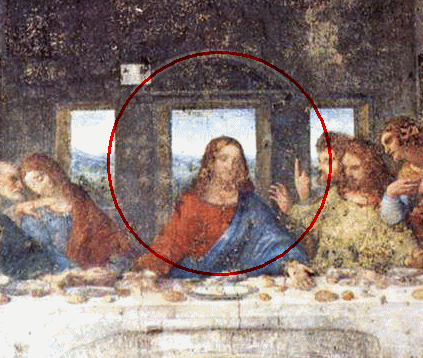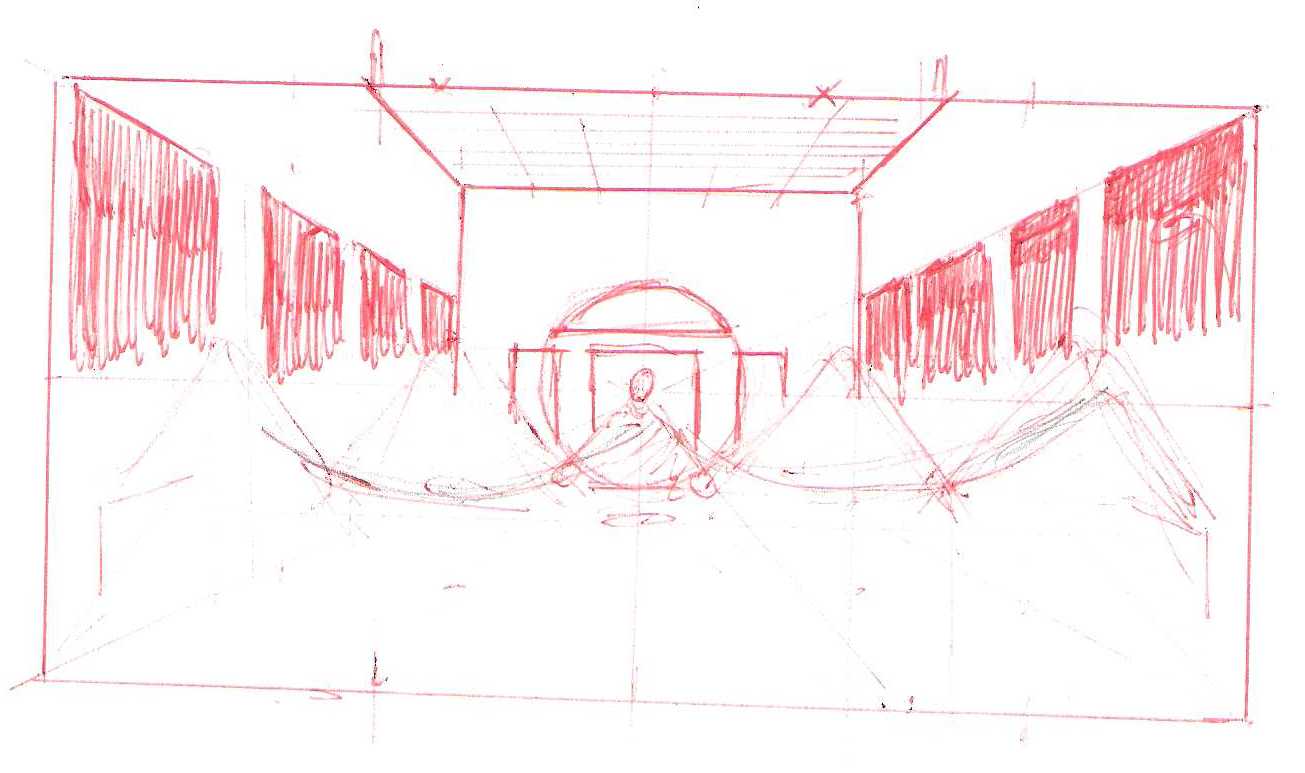

Compositional Analysis of Leonardo's The Last Supper

This is the core geometric composition of the piece which is quite precise in its geometries. Leonardo was fortunate in having a surface to work on which was exactly twice as wide as it was high. The central square is thirded.
The other key vertical lines are golden rectangles formed from the two squares found when dividing the image horizontally. The arches above use this same proportion. He uses bisecting lines from the different rectangles to determine the ideal radius of the central circle which we still clearly see in the demi-circle above Christ's head. The circle is completed by the disciples (all but one) leaning back away from Christ along the curve.
Where the one disciple does break the plane of the circle, note the concavity of his face.

Testing the geometries, I drew up two sketches starting only from the proportions.

It worked quite cleanly but I was still wrestling with the architectural model for the 12 disciples. Figure composition cannot be as precise as other compositional elements. We need to play with line of gesture, vision, pointing fingers, and sweeping fabric. There are always a lot of various elements going into a figure composition.

Here is where I think I unlocked it. It could be said that if it needs to be unlocked and searched for then it probably isn't right but this is just a design that he likely based the overall lines of movement on. Remember that making them more exact would have made his figures seem unnatural.
The 12 disciples are arranged into four general pyramids of three. Swooping down from the golden rectangle points above are two wide arcs which have the golden rectangle to golden rectangle radius. While tinkering with this I found a third circle in the center. It is cleaner than the smaller central circle but I don't see why they can't both be in there.

For a more detailed analysis of how figure composition works, let's look closer at the left.

Which Apostle is which is up for debate but let's go with the following (Left to right)
Bartholomew, James the Lesser, Andrew, Judas, Peter, John
The sweep of the arc starts on the jaw line of Bartholomew, follows the robes and jaw line of James and the, and this is a cool bit, the hands and tunic of Andrew. Andrew's gesture is eye-catching and he pushes against the plane of the painting and we'd stop there if it were not for the strength of this triad in forcing our eyes to the right (with their looks and James' hand) so we follow along the sweeping arc but the push has slowed us. We next hit the arm of Judas, at the very bottom of the arc, where his clenched fist clutches the pouch of silver coins. The line of hands (both Judas' and John's pull us on but more, we have the precisely angled pointing fingers of Peter to help us regain that gradual upward momentum which will rise with magnificent freedom on the arms of Christ.
Our line of observation draws in moderately, is slowed without being interrupted, and then accelerated on release to the central figure (where it will circle and do loop-de-loops awhile).